Antarctica, the frozen continent at the bottom of our world, conjures images of endless ice, howling winds, and extreme isolation. Many assume this harsh landscape is devoid of terrestrial wildlife, especially birds – creatures we often associate with forests, meadows, and tropical paradises. Yet remarkably, several bird species not only visit Antarctica but have evolved specialized adaptations allowing them to thrive in what may be Earth’s most unforgiving environment. From the charismatic emperor penguin to the soaring albatross, these feathered survivors demonstrate the extraordinary adaptability of avian life. Their stories of resilience challenge our assumptions about where and how birds can live, revealing nature’s remarkable capacity for finding ecological niches even in seemingly impossible conditions.
Emperor Penguins: The Ultimate Antarctic Specialists
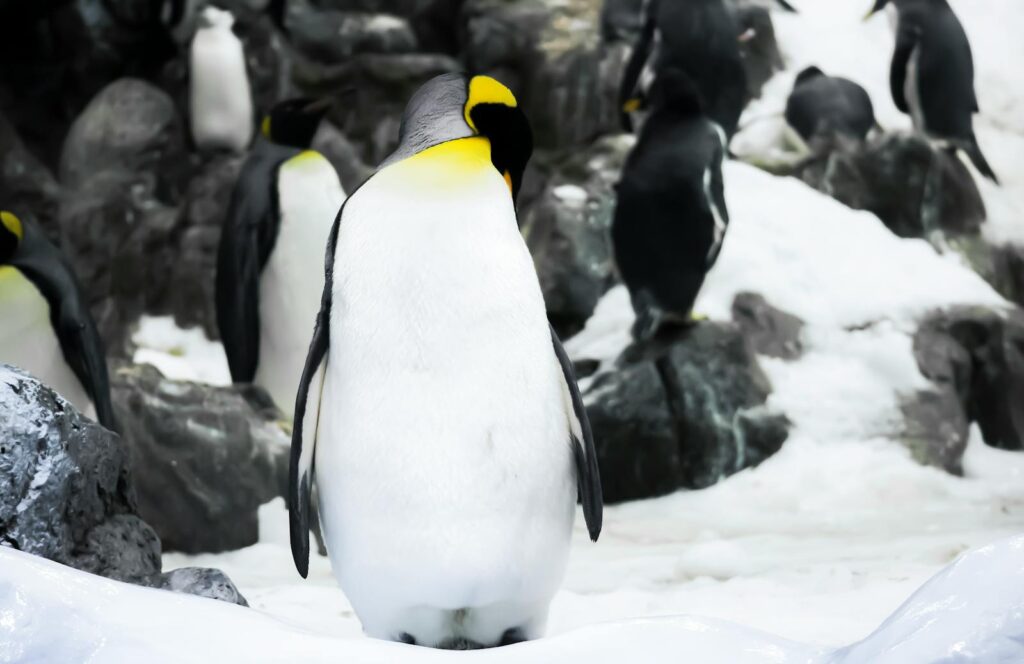
Emperor penguins stand as the iconic symbols of Antarctic resilience, being the only birds to breed during the harsh Antarctic winter. Standing nearly four feet tall, these remarkable birds endure temperatures plummeting to -40°F and winds exceeding 100 mph while incubating their eggs. Male emperors balance eggs on their feet for about two months, using a specialized brood pouch to keep them warm while fasting entirely during this period—potentially losing up to 45% of their body weight. Their bodies feature multiple adaptations for extreme cold, including four layers of overlapping feathers, substantial fat reserves, and specialized blood vessels that minimize heat loss through their feet. Perhaps most impressively, emperor penguins form huddles or “turtle formations” where thousands of birds pack tightly together, rotating positions so each bird gets turns in the warmer interior—a remarkable social solution to surviving the planet’s most extreme winter breeding season.
Adélie Penguins: The Most Abundant Antarctic Birds
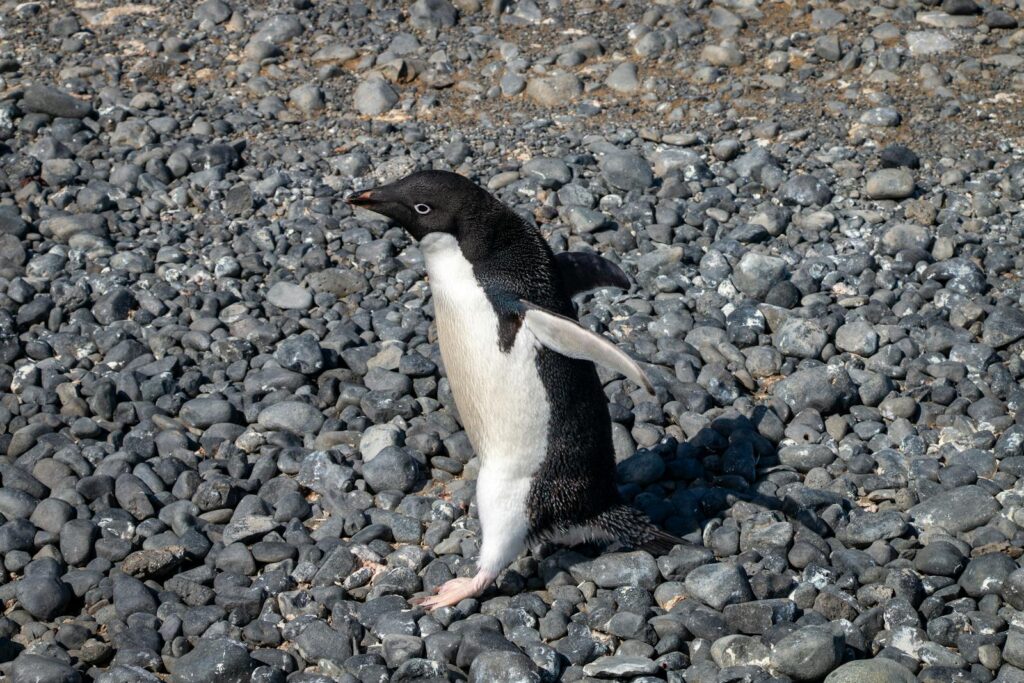
Adélie penguins represent Antarctica’s most numerous penguin species, with an estimated population of 2.5 million breeding pairs distributed around the continental coastline. These medium-sized penguins, distinguished by their tuxedo-like black and white plumage and distinctive white eye rings, typically nest on rocky, ice-free areas during the austral summer. Unlike emperor penguins, Adélies migrate north during winter to follow the edge of the pack ice where they can access open water for feeding. Their diet consists primarily of krill, though they also consume small fish and cephalopods, which they pursue during impressive dives reaching depths of over 500 feet despite their small size. Adélie penguins face growing challenges from climate change, as warming temperatures alter sea ice patterns and affect krill availability in parts of their range, making them important indicators of Antarctic ecosystem health.
Chinstrap Penguins: Named for Their Distinctive Markings
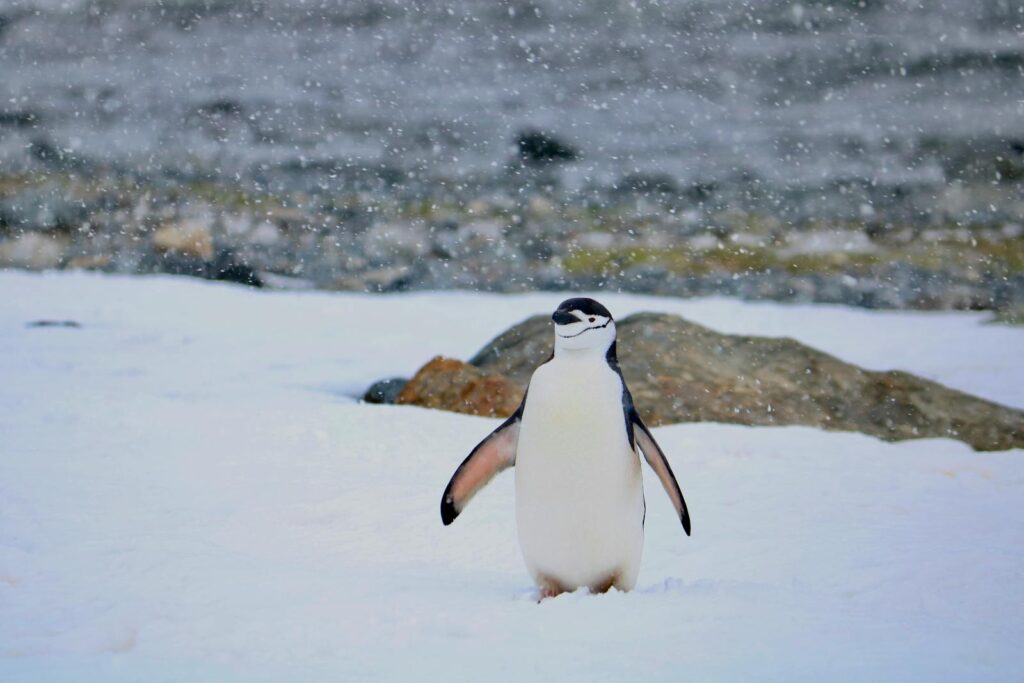
Chinstrap penguins earn their name from the narrow black band that runs under their heads, creating the appearance of a helmet strap. These medium-sized penguins primarily inhabit the Antarctic Peninsula and various sub-Antarctic islands, where they form some of the largest penguin colonies in the world—some containing over 100,000 breeding pairs. Particularly aggressive for their size, chinstraps vigorously defend their nesting territories using their bills and flipper-like wings as weapons against intruders. These penguins construct simple nests from small stones, which serve both to elevate eggs above meltwater and as prized possessions that mates often present to each other during courtship rituals. Chinstraps are exceptional swimmers, capable of traveling over 50 miles offshore on feeding trips and diving to depths of nearly 230 feet while hunting krill, their primary food source.
Gentoo Penguins: The Speedsters of Antarctica
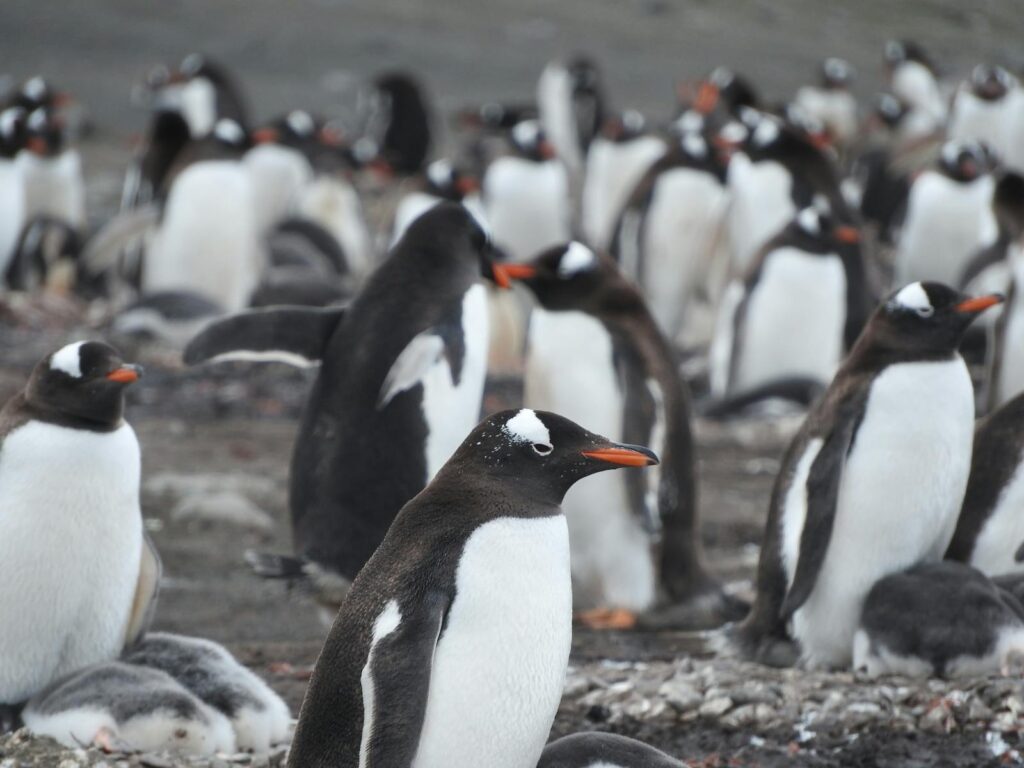
Gentoo penguins hold the title of fastest underwater swimmers among all penguin species, capable of reaching speeds up to 22 miles per hour—an adaptation that helps them evade predators like leopard seals. Recognizable by their bright orange-red bills and distinctive white patches extending from their eyes across the top of their heads, gentoos have the most northerly range of any Antarctic penguin. Their breeding distribution extends from the Antarctic Peninsula to several sub-Antarctic islands, where they show a preference for ice-free areas with access to both freshwater and the ocean. Unlike more colonial penguin species, gentoos typically establish smaller, more loosely organized breeding groups, constructing elaborate nests from stones, moss, and other available vegetation. Climate change appears to be benefiting gentoos in some regions, as warming temperatures have allowed them to expand their breeding range southward along the Antarctic Peninsula, where they’re increasingly establishing colonies in areas formerly dominated by Adélie penguins.
Macaroni Penguins: Flamboyant Crested Visitors
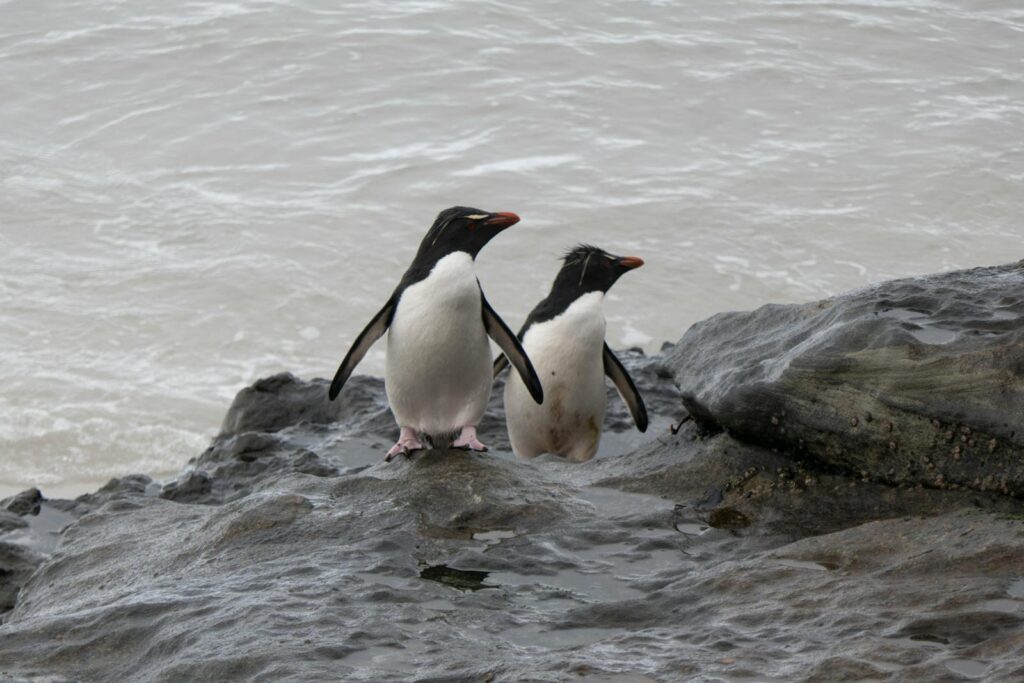
Macaroni penguins bring a touch of flamboyance to the Antarctic region with their striking yellow crest feathers that sweep backward from their foreheads, resembling the elaborate “macaroni” wigs fashionable among 18th-century European dandies—the origin of their unusual name. While primarily associated with sub-Antarctic islands, these crested penguins occasionally venture to the Antarctic Peninsula during their feeding trips. Macaronis are among the most numerous penguin species globally, though most breed outside the Antarctic proper on islands like South Georgia, Marion Island, and the Kerguelen Islands. These energetic penguins undertake impressive foraging journeys, sometimes traveling over 250 miles on a single trip while diving repeatedly to depths exceeding 300 feet in pursuit of krill and small fish. Their breeding colonies are notoriously crowded and noisy affairs, with birds packed tightly together on steep, rocky slopes where they engage in complex vocalizations and displays to maintain pair bonds and territorial boundaries.
Snow Petrels: The Ghosts of the Ice
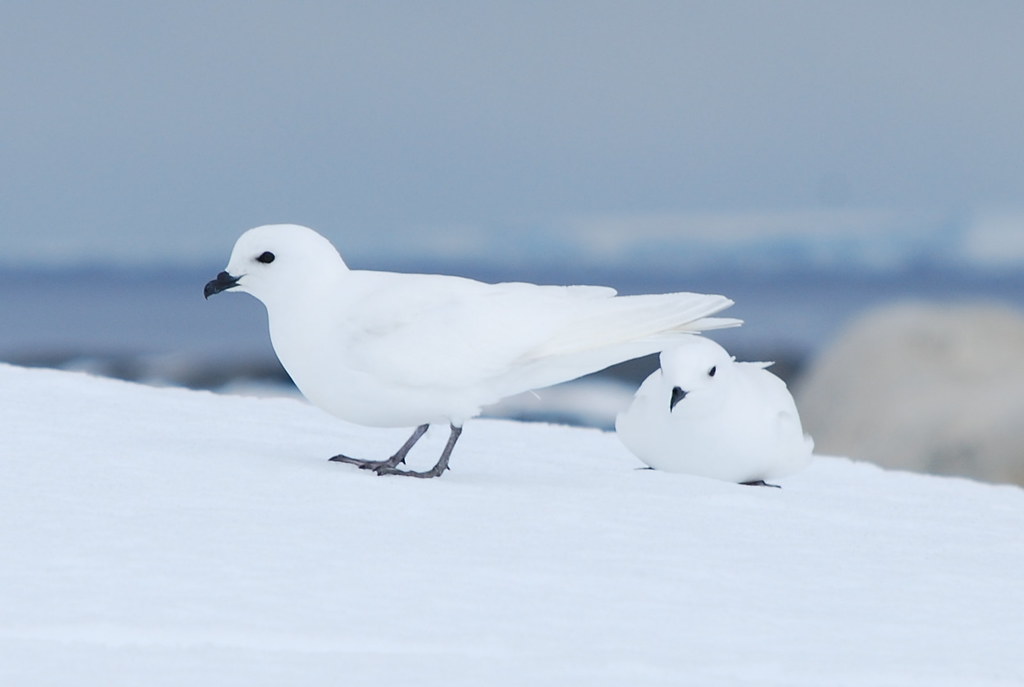
Snow petrels embody the ethereal beauty of Antarctica with their pure white plumage, which provides perfect camouflage against the snow and ice landscapes where they make their homes. These medium-sized seabirds are among the southernmost breeding birds in the world, nesting farther inland on the Antarctic continent than almost any other species besides the emperor penguin. Snow petrels construct their nests in rock crevices and cliff faces up to 280 miles from the ocean, using these protected spaces to raise their single chick during the brief Antarctic summer. Their remarkable navigation abilities allow them to locate tiny patches of open water within vast sea ice expanses, where they feed primarily on fish, squid, and krill collected from the water’s surface. Perhaps most impressively, snow petrels have an extraordinary longevity, with some individuals living beyond 40 years—a testament to their successful adaptation to one of Earth’s most extreme environments.
Antarctic Skuas: The Predators of the South
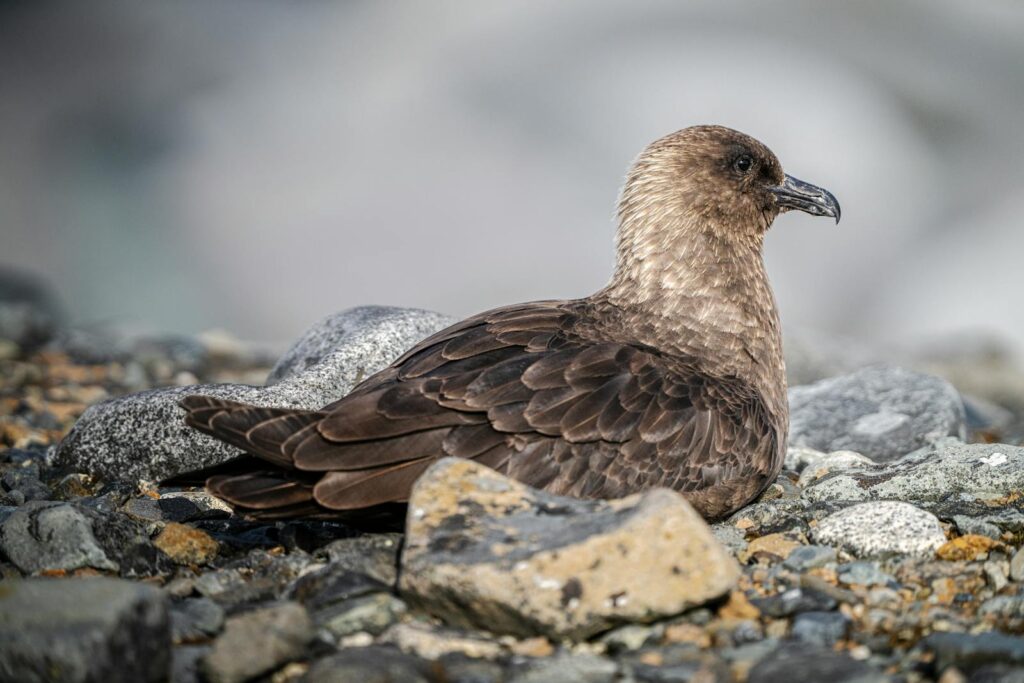
Antarctic skuas function as the primary avian predators within the Antarctic ecosystem, playing a role comparable to raptors in more temperate environments. These large, gull-like birds with brown plumage display remarkable intelligence and adaptability in their feeding strategies. Skuas are notorious for their aggressive predation on penguin colonies, where they target eggs and unguarded chicks, sometimes working in pairs with one bird distracting a parent penguin while the other snatches the vulnerable offspring. Beyond their predatory habits, skuas also excel as opportunistic scavengers, readily consuming carrion and afterbirth from seal colonies, and as kleptoparasites that chase and harass other seabirds until they regurgitate their recently caught food. Their territorial behavior during breeding season is legendary among Antarctic researchers, as nesting skuas will dive-bomb and strike the heads of humans who venture too close to their nesting areas—earning them a fearsome reputation among scientific field teams.
Wilson’s Storm Petrels: Tiny Dancers of the Southern Ocean
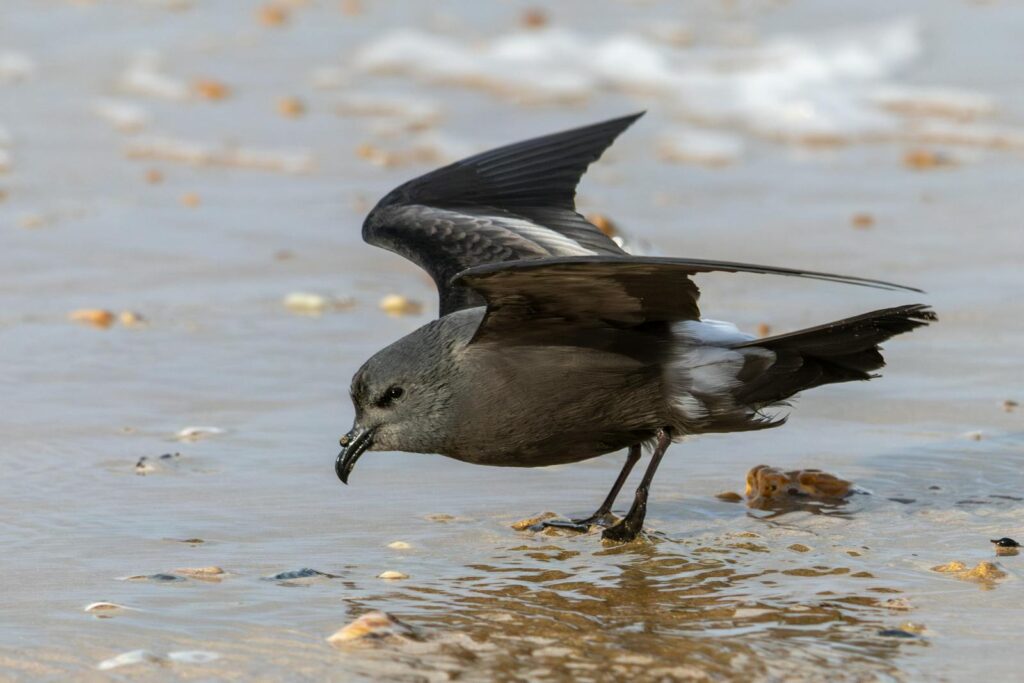
Wilson’s storm petrels, weighing barely more than an ounce, are among the smallest seabirds to inhabit Antarctic waters, yet they navigate some of the world’s most turbulent seas with remarkable agility. These diminutive birds are instantly recognizable by their distinctive feeding behavior—they appear to “walk” on water, pattering their feet on the surface while hovering with wings outstretched to detect and capture tiny marine organisms. Despite their small size, Wilson’s storm petrels undertake one of the longest migrations of any bird, breeding on Antarctic and sub-Antarctic islands during the austral summer before flying north to spend their non-breeding season in the North Atlantic—a round-trip journey exceeding 18,000 miles annually. They nest in rock crevices and abandoned burrows on coastal slopes, laying a single egg that both parents incubate and later feed through regurgitation of partially digested seafood and concentrated oil produced in their digestive tracts. Remarkably adaptable, these tiny birds have been recorded living up to 20 years, weathering decades of Antarctic storms and transoceanic migrations.
Antarctic Terns: Masters of Polar Migration
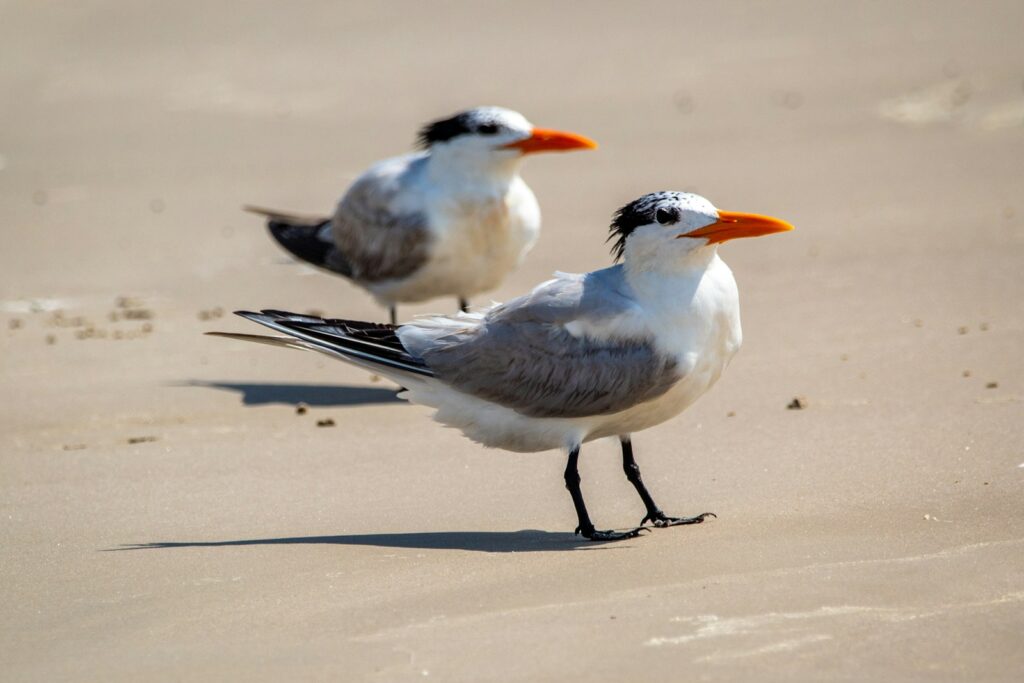
Antarctic terns exemplify extraordinary migration capabilities, undertaking pole-to-pole journeys that rank among the longest migratory routes of any bird species. These elegant, medium-sized seabirds with distinctive forked tails breed along the Antarctic Peninsula and surrounding islands during the austral summer before flying northward to spend the boreal summer in the Arctic—essentially experiencing an endless summer as they follow favorable conditions across the globe. Their streamlined bodies and pointed wings enable efficient long-distance flight, while specialized salt glands allow them to drink seawater during their transoceanic crossings. Antarctic terns feed primarily through spectacular plunge-diving, hovering momentarily before plummeting into the water at high speeds to capture small fish and crustaceans near the surface. During their brief Antarctic breeding season, these terns construct simple nests on rocky ground, where they aggressively defend their territories against intruders through intimidating aerial displays and dive-bombing attacks.
Southern Giant Petrels: The Versatile Giants

Southern giant petrels stand as the largest flying birds regularly found in Antarctic waters, with wingspans exceeding seven feet that allow them to soar effortlessly on the region’s powerful winds. These massive seabirds display remarkable feeding flexibility, functioning as predators, scavengers, and kleptoparasites depending on available opportunities. Unlike most seabirds, giant petrels possess the unusual ability to walk effectively on land, enabling them to wander through penguin colonies where they hunt vulnerable chicks or scavenge carcasses. Their powerful hooked bills can tear through the tough skin of seal carcasses—earning them the nickname “stinkers” or “vultures of the sea” among early Antarctic explorers who noted their gathering around whale processing stations. Southern giant petrels exhibit fascinating color dimorphism, with most individuals showing typical dark brown plumage while approximately 15% display an all-white “morphotype” except for scattered dark spots—a natural variation that remains poorly understood despite decades of research.
Wandering Albatrosses: Antarctica’s Greatest Wanderers
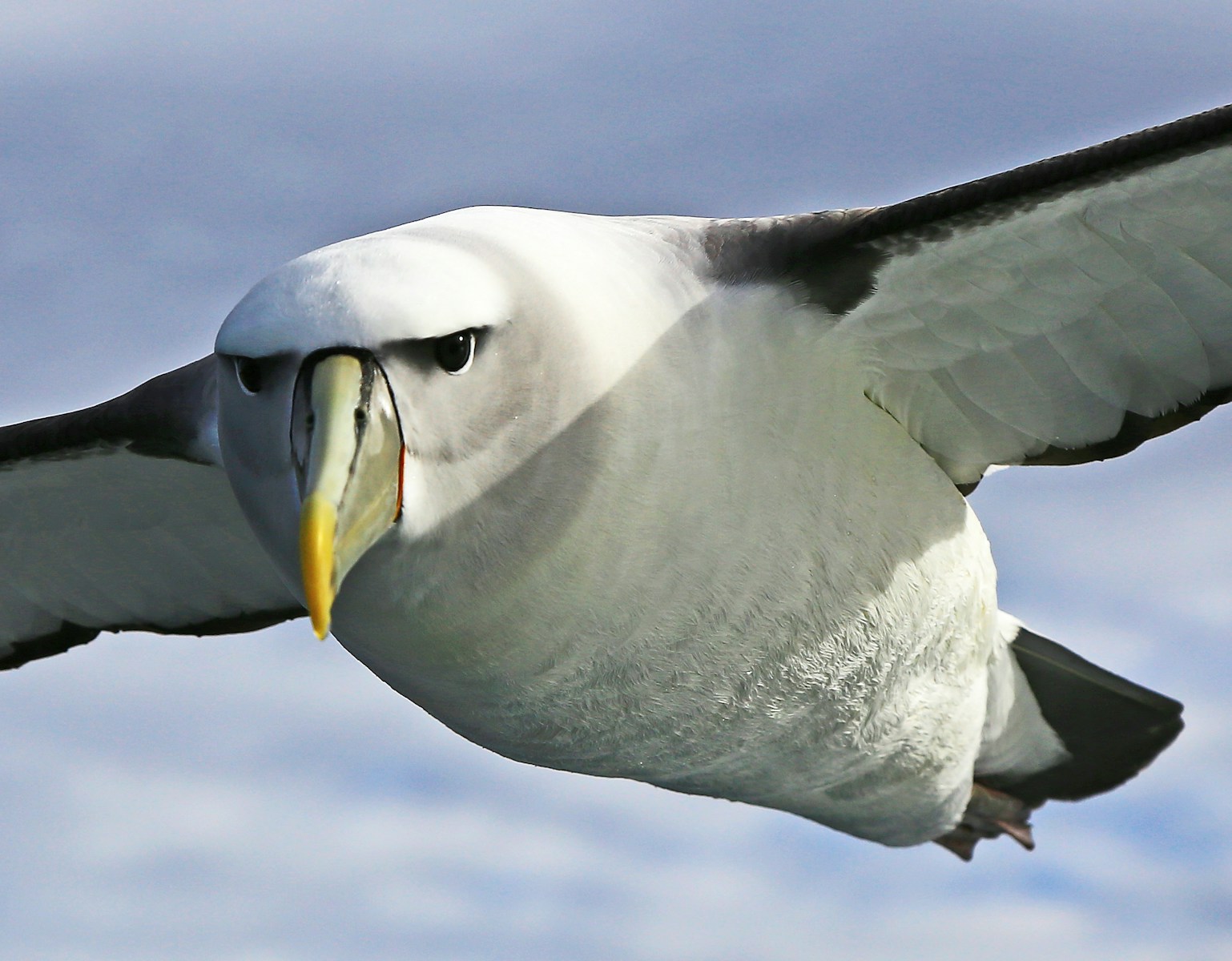
Wandering albatrosses claim the title of largest wingspan of any living bird, with their wings stretching an astonishing 11 feet from tip to tip—an adaptation that allows them to soar for days over the Southern Ocean without a single wing flap. These majestic birds breed on sub-Antarctic islands like South Georgia and the Kerguelen Islands, building large mound nests where they raise a single chick over an extended breeding cycle that spans more than a year. Wandering albatrosses embody extreme longevity and delayed maturity, not breeding until they’re at least 11 years old and potentially living beyond 60 years while maintaining lifelong pair bonds with their mates. Their extraordinary flight efficiency comes from specialized wing joints that lock in an extended position, allowing them to practice dynamic soaring—a technique where they gain energy by repeatedly climbing into headwinds and descending with tailwinds, enabling them to cover over 10,000 miles in a single foraging trip while expending minimal energy. Unfortunately, despite their impressive adaptations, wandering albatrosses face serious threats from longline fishing operations, which have contributed to their classification as vulnerable on the IUCN Red List.
Blue-eyed Shags: The Antarctic’s Diving Specialists
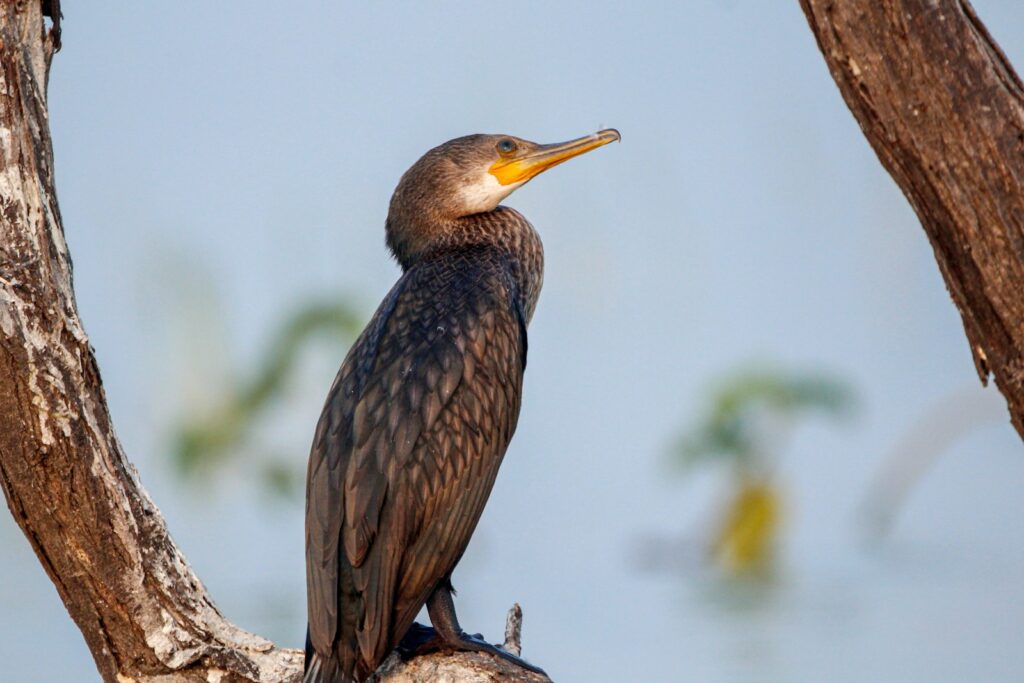
Blue-eyed shags (also called Antarctic cormorants) represent the southernmost breeding cormorant species in the world, having evolved specialized physiological adaptations for diving in frigid Antarctic waters. These striking birds feature glossy blue-black plumage, contrasting white underparts, and vivid blue eye rings that give them their common name. Unlike most other Antarctic birds, blue-eyed shags possess only partially waterproof feathers—a seemingly disadvantageous trait that allows them to reduce buoyancy during dives that regularly reach depths of over 300 feet in pursuit of bottom-dwelling fish and invertebrates. Their remarkable diving ability stems from specialized adaptations, including unusually dense bones that reduce buoyancy and heightened hemoglobin concentrations that increase oxygen storage capacity during submersion. After fishing expeditions, blue-eyed shags must dry their partially wetted feathers by adopting their characteristic wing-spreading posture on rocky promontories, making them easily identifiable fixtures along Antarctic coastlines even from considerable distances.
Climate Change and Antarctica’s Avian Inhabitants
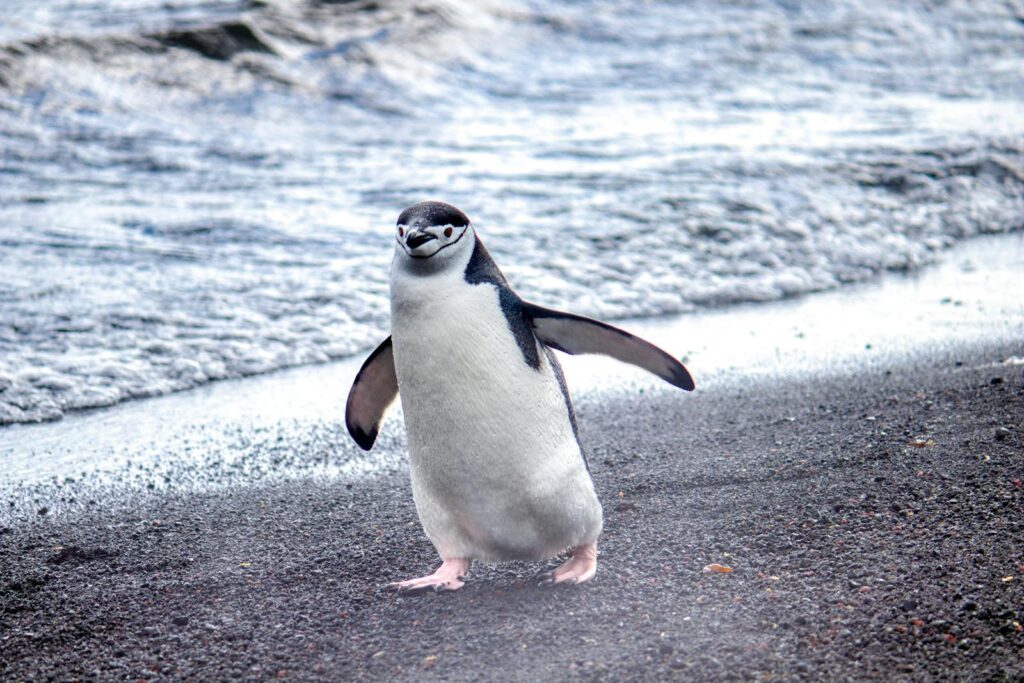
Climate change presents perhaps the most significant contemporary threat to Antarctica’s specialized bird species, with warming occurring at rates up to five times faster than the global average in some parts of the Antarctic Peninsula. Rising temperatures have already begun altering crucial sea ice dynamics that many Antarctic birds depend upon—particularly affecting emperor penguins, which require stable sea ice platforms for their unique winter breeding cycle. Changing precipitation patterns compound these challenges, with increased snowfall in some regions burying penguin eggs and chicks while simultaneously shifting krill distributions that form the foundation of many Antarctic avian food webs. Species like Adélie penguins have experienced population declines exceeding 65% in certain traditional breeding areas along the western Antarctic Peninsula, while more adaptable species like gentoo penguins have expanded their ranges southward into newly suitable habitat. Scientific monitoring programs now routinely employ satellite tracking, automated camera systems, and genetic analyses to document these shifting distributions and population trends, providing crucial data for conservation planning in one of Earth’s most rapidly changing ecosystems.
Conclusion
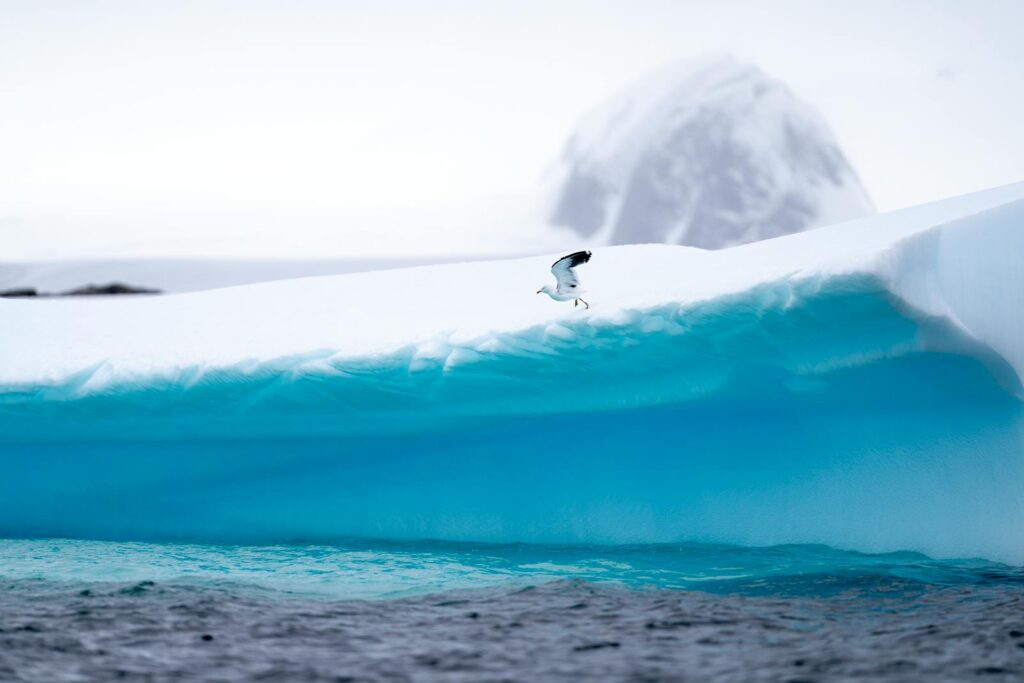
The birds of Antarctica demonstrate nature’s remarkable capacity for adaptation and specialization. From the emperor penguin’s extraordinary winter breeding cycle to the wandering albatross’s unparalleled flying efficiency, each species has evolved unique solutions to the challenges of Earth’s most extreme continent. These birds don’t merely survive in Antarctica—they thrive through specialized physiological, behavioral, and social adaptations that allow them to exploit niches unavailable to less specialized species. As climate change increasingly impacts polar ecosystems, the future of these remarkable birds remains uncertain. Yet their demonstrated resilience over evolutionary time offers hope that at least some may adapt to changing conditions. The continued study and conservation of Antarctica’s avian inhabitants not only advances our understanding of ecological adaptation but also helps protect some of the most extraordinary birds on our planet—living proof that life finds a way, even in the harshest environments imaginable.
